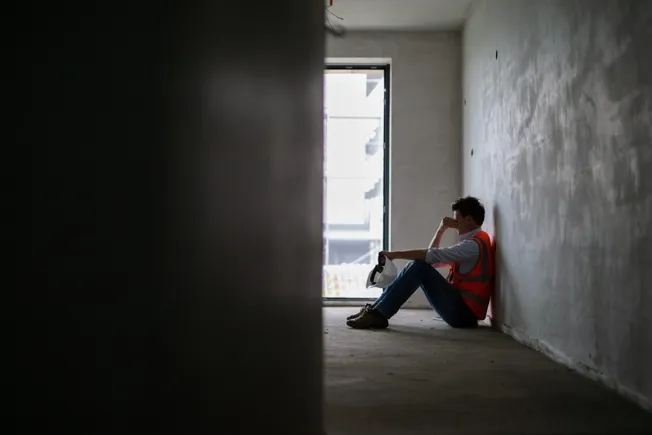Dive Brief:
- This week is Construction Suicide Prevention Week, and, on Monday, workers on jobsites across the country will stand down to address the crisis. The nature of the high-stress work and cultural factors contribute to construction’s high suicide risk, experts say, and support groups and industry leaders are increasingly trying to curb the issue.
- “We definitely see construction workers are overrepresented in overdose and suicide fatalities,” said Amber Trueblood, data center director for the Center for Construction Research and Training — CPWR, during a Sept. 5 webinar.
- The suicide death rate for construction workers was 2.4 times higher than all industries (46.1 vs. 19.5 per 100,000 full time employees) in 2022, and there were five times more suicides in construction than at-work fatalities that year, the most recently available set of data.
Dive Insight:
“The construction industry just comes with its own distinct risk factors that can contribute to suicide death,” said Jessica Bunting, research to practice director at CPWR, during the webinar, which also featured speakers from The Construction Industry Alliance for Suicide Prevention and the American Foundation for Suicide Prevention.
Factors that contribute to suicide risk in construction, Bunting said, include extreme pressure to work quickly with a low margin for error, a male-dominated demographic that creates a “tough-guy” mentality, alcohol and drug use, poor access and utilization of healthcare, job instability or uncertainty and high injury rates that lead to chronic pain.
Those issues can often compound, too, she said. As workers feel like they need to keep working to support their families, they don’t prioritize their physical or mental health.
“People are working through illness. They’re working through injury. They’re not getting paid unless they work,” Bunting said.
Indeed, suicide isn’t the only troubling factor. Reliance on painkillers or other substance abuse is high in construction. Over 17 times as many construction workers died from overdoses in 2022 than from jobsite fatalities, Trueblood said.
Making a change
Bunting emphasized curbing the problem by cultivating a “culture of care.”
Offering leadership training, setting up injury management or improved return-to-work programs, offering paid leave, being more flexible with expectations and creating peer support programs are just a few ways to counteract the aspects of the industry that can wear on workers’ mental health.
“Making your workers feel like they don’t have to rush through work and sacrifice their own safety and wellbeing is really critical,” Bunting said.
Contractors around the nation are working on this issue.
Trisha Calabrese, senior vice president of programs for AFSP, highlighted one of those efforts. In March, construction giant Bechtel pledged $7 million over five years for AFSP, the largest donation in the group’s history. AFSP estimates the effort will reach 500,000 people.
At the time of the announcement, company CEO Brendan Bechtel called the statistics around suicide in construction “shameful.”
During the webinar, Calabrese also offered more interpersonal ways of thinking about suicide prevention.
“I want you to keep in mind here that thoughts of suicide are very complex,” she said, adding that they are often temporary and are part of the brain’s way of problem-solving when it can seem like there is no escape. And, when seeing the signs in a coworker, friend or family member, she emphasized taking action.
“If you are thinking that someone is considering suicide, trust your gut and assume that you’re the only one that’s going to ask them. And you can be direct,” she said.

